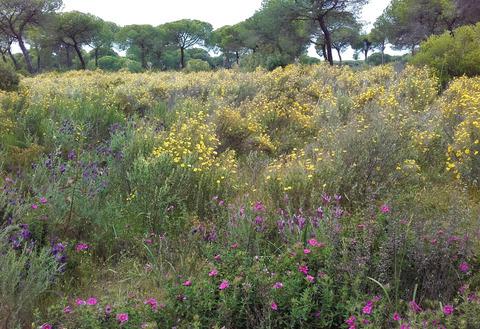当前位置:
X-MOL 学术
›
Funct. Ecol.
›
论文详情
Our official English website, www.x-mol.net, welcomes your
feedback! (Note: you will need to create a separate account there.)
Do visual traits honestly signal floral rewards at community level?
Functional Ecology ( IF 4.6 ) Pub Date : 2020-11-07 , DOI: 10.1111/1365-2435.13709 Pedro L. Ortiz 1 , Pilar Fernández‐Díaz 1 , Daniel Pareja 1 , Marcial Escudero 1 , Montserrat Arista 1
中文翻译:

视觉特质是否在社区一级诚实地象征着花卉的回报?
更新日期:2020-11-07
Functional Ecology ( IF 4.6 ) Pub Date : 2020-11-07 , DOI: 10.1111/1365-2435.13709 Pedro L. Ortiz 1 , Pilar Fernández‐Díaz 1 , Daniel Pareja 1 , Marcial Escudero 1 , Montserrat Arista 1
Affiliation

|
- The high variability observed in floral traits has been interpreted as resulting from the adaptation of plants to pollinators, as the latter present innate preferences for specific floral traits and impose selection over them. However, some pollinators such as bees can learn to associate floral signals with rewards, thus increasing floral constancy on more rewarding flowers. The integration of all these rewards and cues is markedly important at community level, where co‐flowering species compete for pollinators.
- In order to verify the honesty of the above‐mentioned signals, we examined the association between floral visual signals (size, colour, symmetry and floral display) and rewards (pollen and nectar) for 98 species in a Mediterranean community. The associations between floral traits were analysed considering the phylogenetic relationship between the different species.
- Flower colour, size, pollen volume or amount of sucrose exhibited no phylogenetic signal, which suggests an adaptive evolution in response to different conditions in the pollinator community. Flower size was seen to constitute the most honest signal for pollinators, as this was significantly associated with quantities of pollen and nectar. In contrast, nectar concentration was observed to be positively associated with chromatic contrast. We detected no relationship between flower shape and rewards, on the one hand, nor between flower display and rewards, on the other.
- Our study unequivocally demonstrates the correlation between rewards and the visual signals perceived by bees, the most effective pollinators in the Mediterranean Basin. In the community studied, bees employed flower size at longer distances and chromatic contrast at shorter distances to predict rewards. The limited number of studies existing in this sense indicates that this kind of association appears to be community specific.
中文翻译:

视觉特质是否在社区一级诚实地象征着花卉的回报?
- 在花性状中观察到的高变异性已被解释为植物对传粉媒介的适应,因为后者对特定的花性状表现出先天的偏好并对其进行选择。但是,某些授粉媒介(如蜜蜂)可以学会将花信号与奖励联系起来,从而增加了更多奖励花的花型稳定性。所有这些奖励和线索的整合在社区一级非常重要,在社区一级,共同开花的物种争夺传粉媒介。
- 为了验证上述信号的真实性,我们检查了地中海社区98个物种的花卉视觉信号(大小,颜色,对称性和花卉展示)与奖励(花粉和花蜜)之间的关联。考虑到不同物种之间的系统发生关系,分析了花卉性状之间的关联。
- 花的颜色,大小,花粉量或蔗糖量均未显示出系统发生信号,这表明对传粉媒介群落中不同条件的适应性进化。花的大小被认为是授粉者最诚实的信号,因为这与花粉和花蜜的数量显着相关。相反,观察到花蜜浓度与色差正相关。一方面,我们没有发现花的形状和奖励之间的关系,另一方面,没有发现花的显示和奖励之间的关系。
- 我们的研究明确证明了奖励与蜜蜂所感知的视觉信号之间的相关性,蜜蜂是地中海盆地中最有效的传粉媒介。在所研究的社区中,蜜蜂采用较长距离的花朵大小和较短距离的色差来预测奖励。从这个意义上说,现有的研究数量有限,这表明这种关联似乎是特定于社区的。











































 京公网安备 11010802027423号
京公网安备 11010802027423号